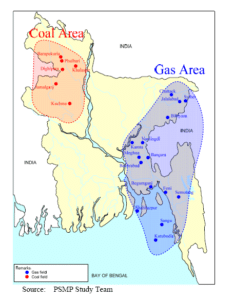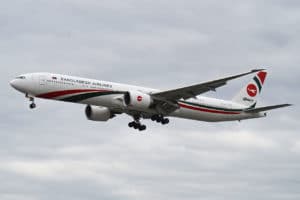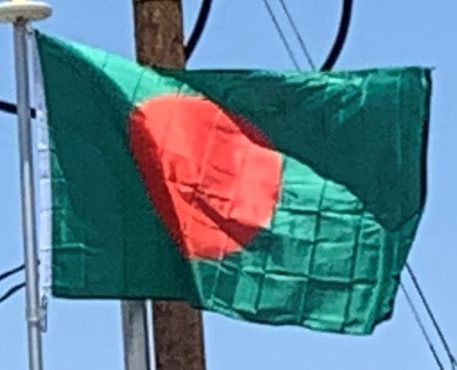
Agriculture is the largest sector of the economy, making up 18.6 percent of Bangladesh’s GDP in November 2010 and employing about 45 percent of the workforce. The country is among the top producers of rice (fourth), potatoes (seventh), tropical fruits (sixth), jute (second), and farmed fish (fifth). Bangladesh is the seventh-largest natural gas producer in Asia, ahead of neighboring Myanmar, and 56 percent of the country’s electricity is generated by natural gas. Major gas fields are located in the northeastern (particularly Sylhet) and southern (including Barisal and Chittagong) regions. Bangladesh has substantial coal reserves, with several coal mines operating in the northwest. Jute exports remain significant, although the global jute trade has shrunk considerably since its World War II peak. Bangladesh has one of the world’s oldest tea industries, and is a major exporter of fish and seafood.

Bangladesh’s textile and ready-made garment industries are the country’s largest manufacturing sector, with 2014 exports of $25 billion. Leather-goods manufacturing, particularly footwear, is the second-largest export sector. The pharmaceutical industry meets 97 percent of domestic demand, and exports to many countries. Shipbuilding has grown rapidly, with exports to Europe.
Steel is concentrated in the port city of Chittagong, and the ceramics industry is prominent in international trade. In 2005 Bangladesh was the world’s 20th-largest cement producer, an industry dependent on limestone imports from northeast India. Food processing is a major sector, with local brands such as PRAN increasing their international market share. The electronics industry is growing rapidly, particularly the Walton Group.
The service sector accounts for 51 percent of the country’s GDP. Bangladesh ranks with Pakistan as South Asia’s second-largest banking sector. The Dhaka and Chittagong Stock Exchanges are the country’s twin financial markets. Bangladesh’s telecommunications industry is one of the world’s fastest-growing, with 114 million cellphone subscribers in December 2013, and Grameenphone, Banglalink, Robi and BTTB are major companies. Tourism is developing, with the beach resort of Cox’s Bazar the center of the industry. The Sylhet region, home to Bangladesh’s tea country, also hosts a large number of visitors. The country has three UNESCO World Heritage Sites (the Mosque City, the Buddhist Vihara and the Sundarbans) and five tentative-list sites.
Transportation:
Aviation has grown rapidly, and includes the flag carrier Biman Bangladesh Airlines and other privately owned airlines. Bangladesh has a number of airports: three international and several domestic and STOL (short takeoff and landing) airports. The busiest, Shahjalal International Airport connects Dhaka with major destinations.

Bangladesh has a 1,681 mile rail network operated by state-owned Bangladesh Railway. The total length of the country’s road and highway network is nearly 13,000 miles.
It has one of the largest inland waterway networks in the world, with 5,000 miles of navigable waters. The southeastern port of Chittagong is its busiest seaport, handling over $60 billion in annual trade (more than 80 percent of the country’s export-import commerce). The second-busiest seaport is Mongla. Bangladesh has three seaports and 22 river ports.
Flag of Bangladesh:
The national flag of Bangladesh was adopted officially on 17 January 1972. It consists of a red disc on top of a green field. The red disc is offset slightly toward the hoist so that it appears centred when the flag is flying. The red disc represents the sun rising over Bengal, and also the blood of those who died for the independence of Bangladesh. The green field stands for the lushness of the land of Bangladesh. The flag is similar to the Japanese flag, with the difference being the Japanese flag depicting the red disc centered on a white field.
